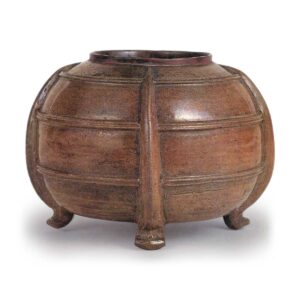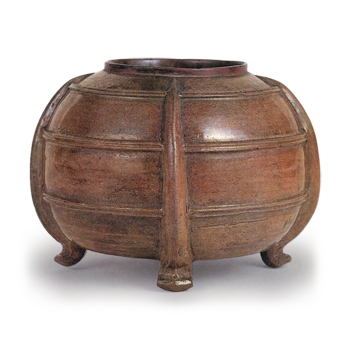
10th century
Height 16.2cm, Mouth diameter 11.0cm, Body diameter 22.6cm, Bottom diameter 15.7cm, Foot height 2.0cm
Important Cultural Property
Jishoin Temple
The body of this short-necked jar has three protruding bands, and four legs, which gradually thicken from the shoulders, are affixed to the body. There are a few known examples of use as storehouse urns, such as those excavated from the back of Kiyomizu-dera Temple in Kyoto and from Yokogawa, Hieizan.
The description on the box reads “Koryo hokai omizusashi” (water jar), and it is believed to have been a gift from Oda Yuraku to the temple, but needless to say, this is not the original purpose of the jar. The item is said to have been a gift from Oda Ariraku to the temple, but needless to say, it was not originally intended for this purpose. The ash glaze, which has been applied thickly and generously over the entire surface, has a yellowish-brown luster, which makes us believe that it is a lead glaze.
Four-footed jars were fired as green-glazed and ash-glazed ceramics from the late 9th to 11th centuries, and are a specialty of Owari, Aichi Prefecture, where they were made exclusively at the Sanage and Ohoku kilns. The jar at Jishoin, which is thought to have come from the Sanage kiln, is the finest of the four-footed jars known today.



